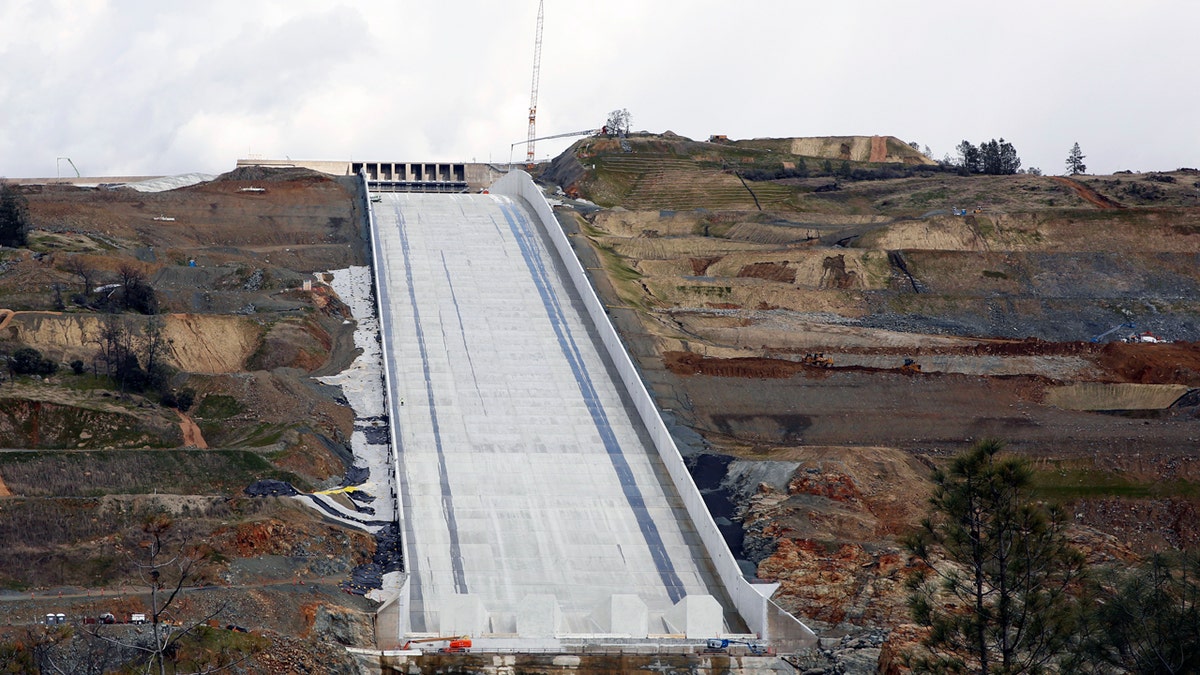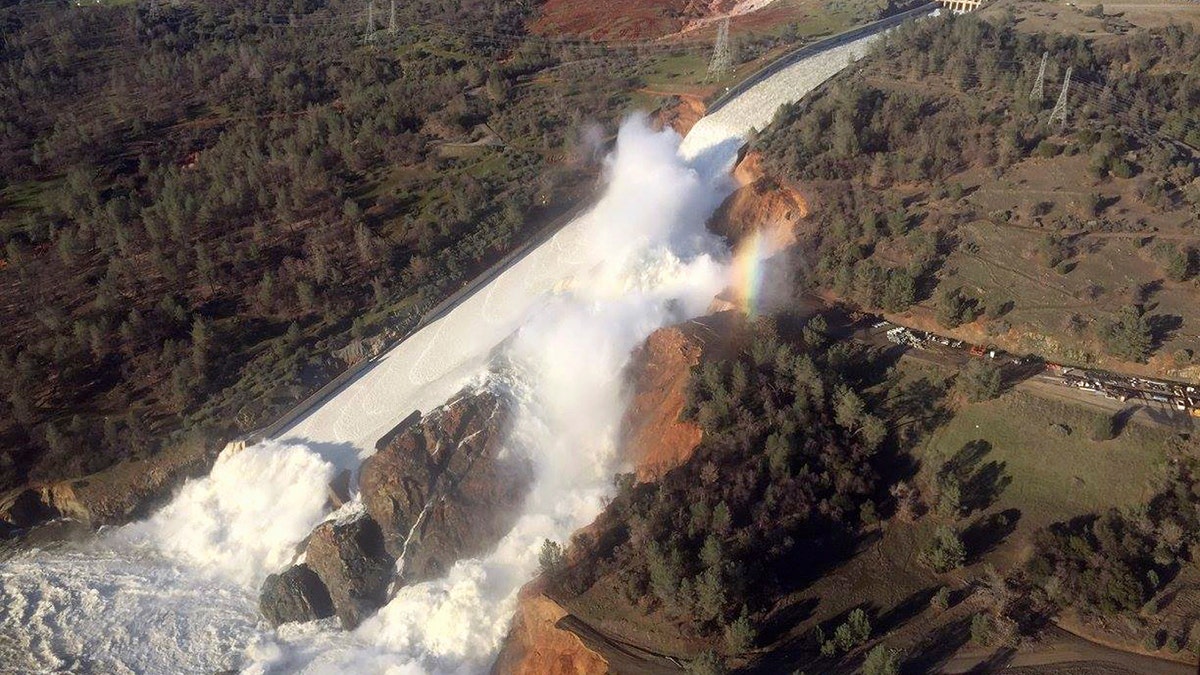
This Feb. 20 photo shows the Oroville Dam spillway in Oroville, Calif. (AP Photo/Rich Pedroncelli)
Officials in Northern California released water down the reconstructed spillway of the nation's tallest dam on Tuesday, more than two years after it crumbled during heavy rains and forced thousands of homes to be evacuated over fears of catastrophic flooding.
Water flowed down the spillway and into the Feather River; storms this week and melting snowpack are expected to swell the lake behind Oroville Dam in the Sierra Nevada foothills, said Molly White, principal engineer with the California Department of Water Resources.
The spring storms follow a very wet winter that coated the mountains with thick snowpack; experts say this has left Califonia drought-free for the first time since December 2011. State experts determined Tuesday that the snowpack is at 162 percent of normal levels, a threefold increase over the same measurement last year.
The dam's main spillway "was designed and constructed using 21st-century engineering practices and under the oversight and guidance from state and federal regulators and independent experts," Joel Ledesma, deputy director of the department's State Water Project, said in a statement.
"We spent the last two years restoring full functionality of the spillway. We expect it to run as designed," he said during a news conference.
The original spillway on the 770-foot-high dam, which is 150 miles northeast of San Francisco, was built in the 1960s. In early 2017, storms drenched the state and the spillway broke apart as it carried heavy flows.

A damaged spillway with eroded hillside is seen in an aerial photo taken over the Oroville Dam in Oroville, California, U.S. February 11, 2017. (William Croyle/Handout via REUTERS)
Dam operators reduced the flow and allowed water to run down an emergency spillway — essentially a low area on the reservoir's rim — but the flow began eroding an earthen embankment that had never been used. Authorities had to order an evacuation of nearly 200,000 people living in communities downstream.
The threat of a dam collapse that would unleash a torrent of water did not happen, however, and people were allowed to go home days later.
CLICK HERE TO GET THE FOX NEWS APP
In January 2018, an independent panel of dam safety experts released a 600-page report that attributed the crisis to "long-term and systemic failures" by California dam managers and regulators to recognize inherent construction and design flaws in the dam.
Repairs have cost $1.1 billion. California requested about $639 million from the Federal Emergency Management Agency (FEMA) for the fixes, but the federal government has rejected $306 million of those reimbursements. U.S. officials say the dam's upper gated spillway was damaged prior to the heavy rain two years ago.
Local water agencies are paying some of the repair costs, and would bear anything not paid by the federal government.
The Associated Press contributed to this report.


